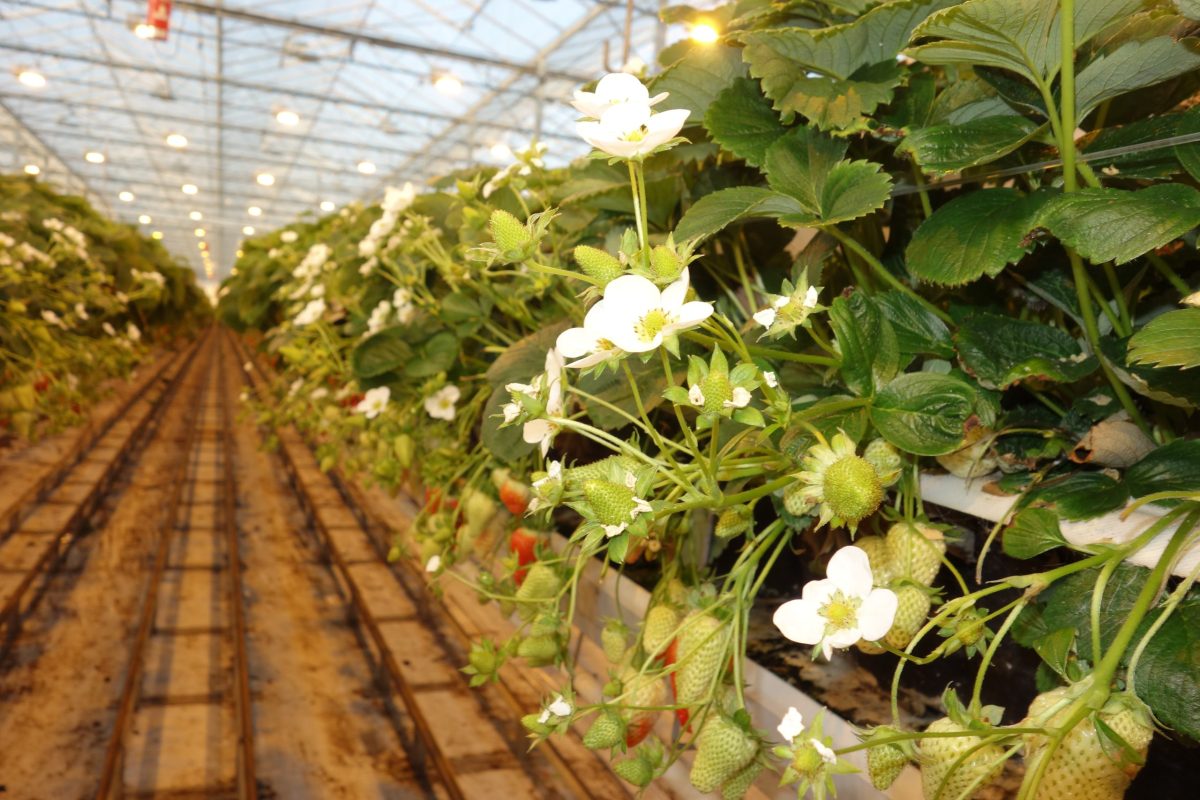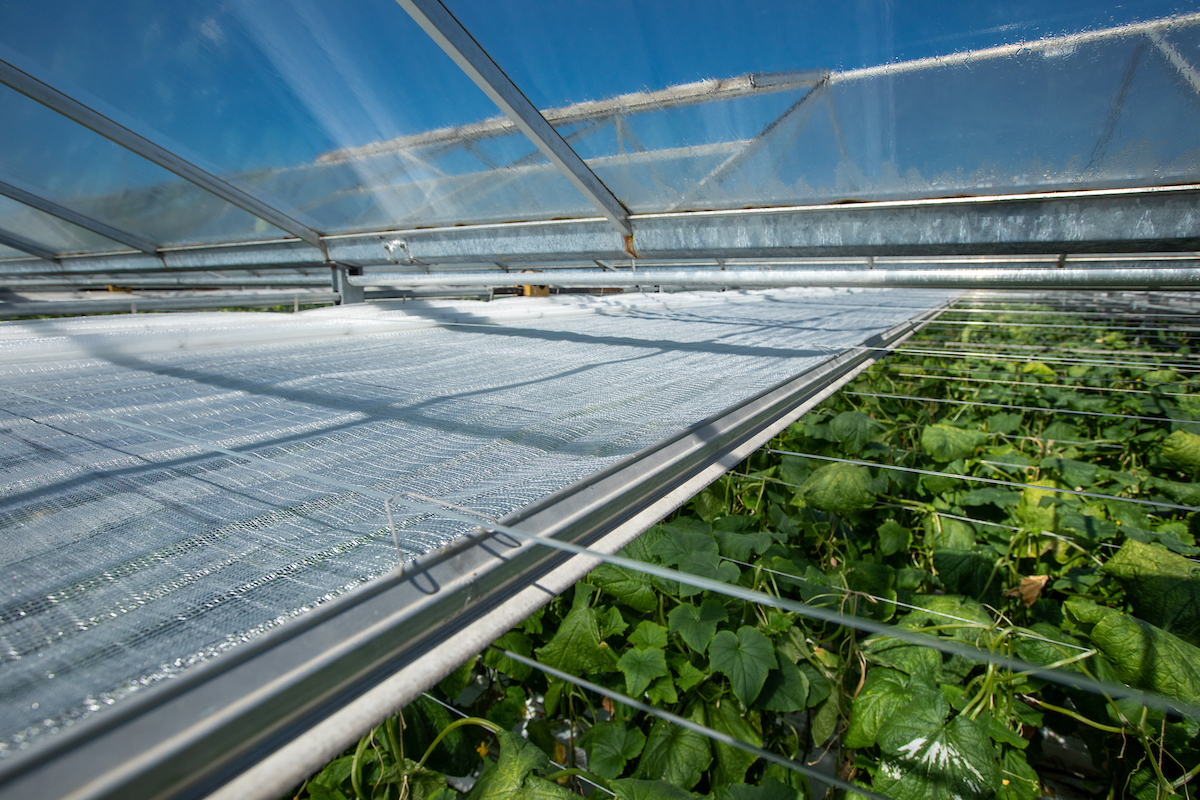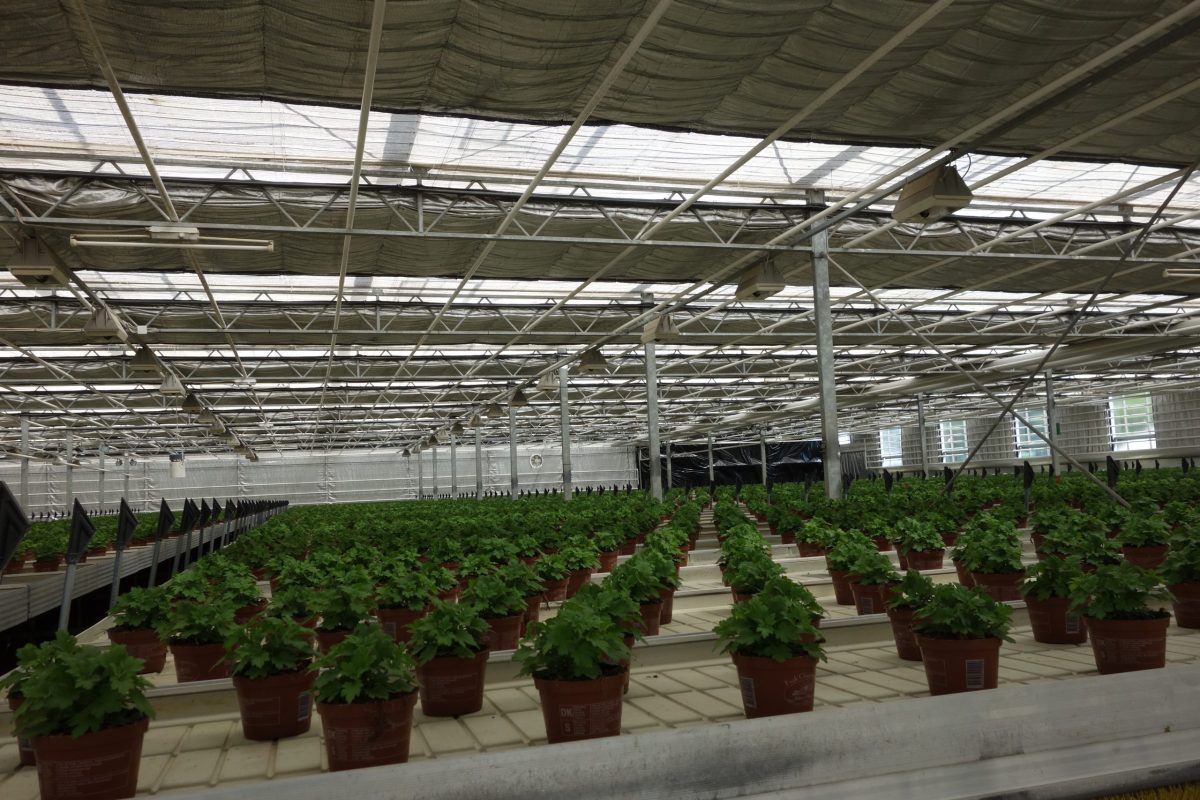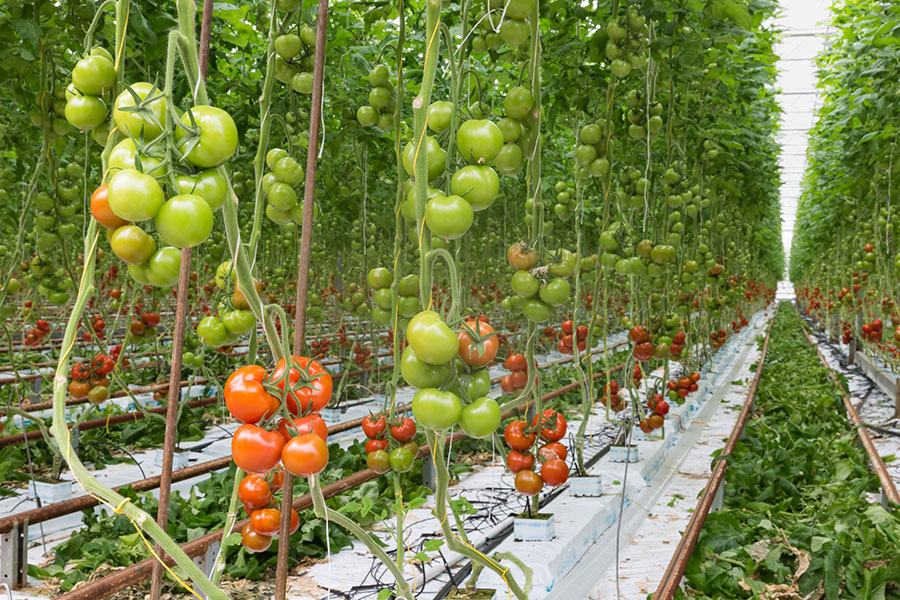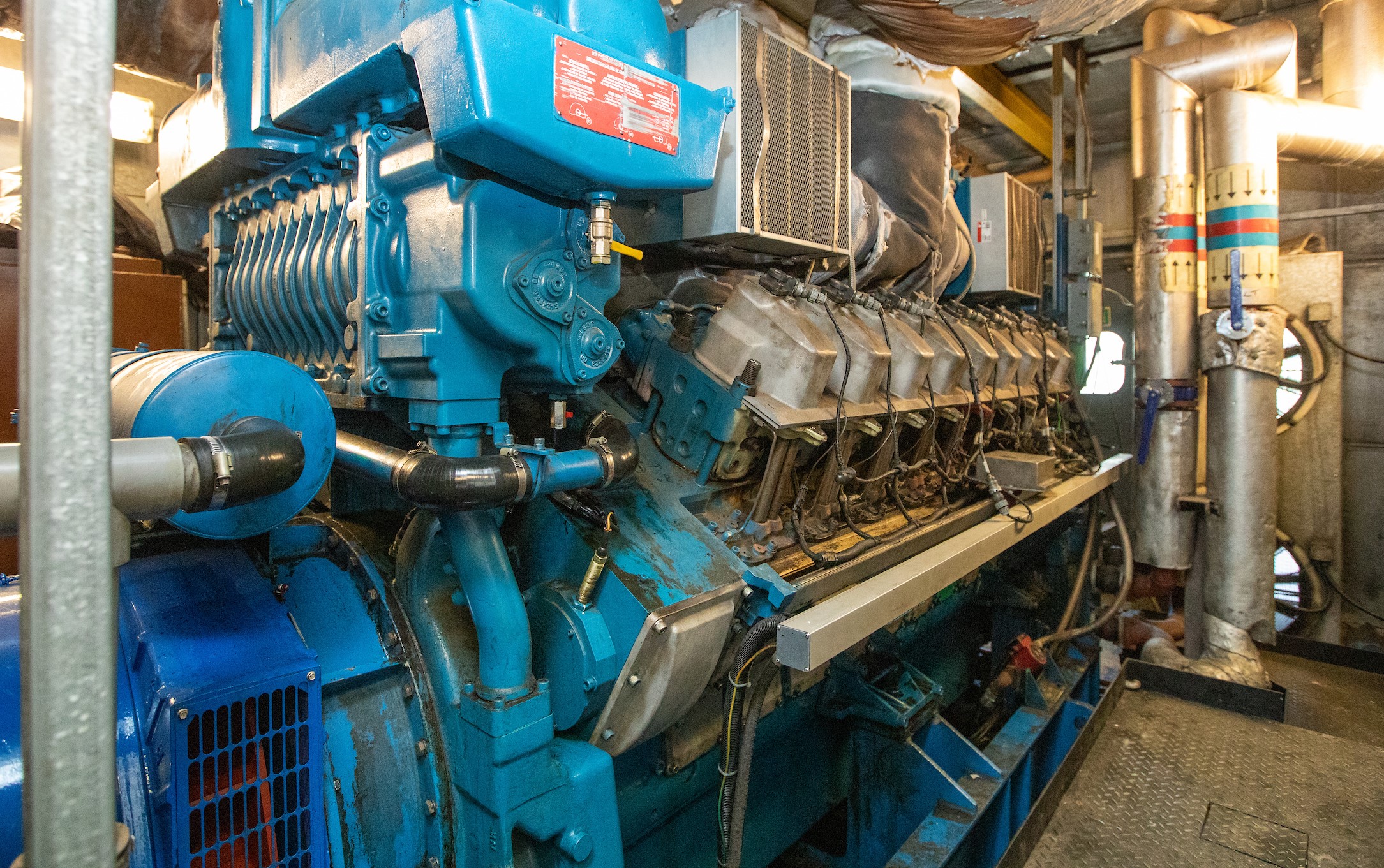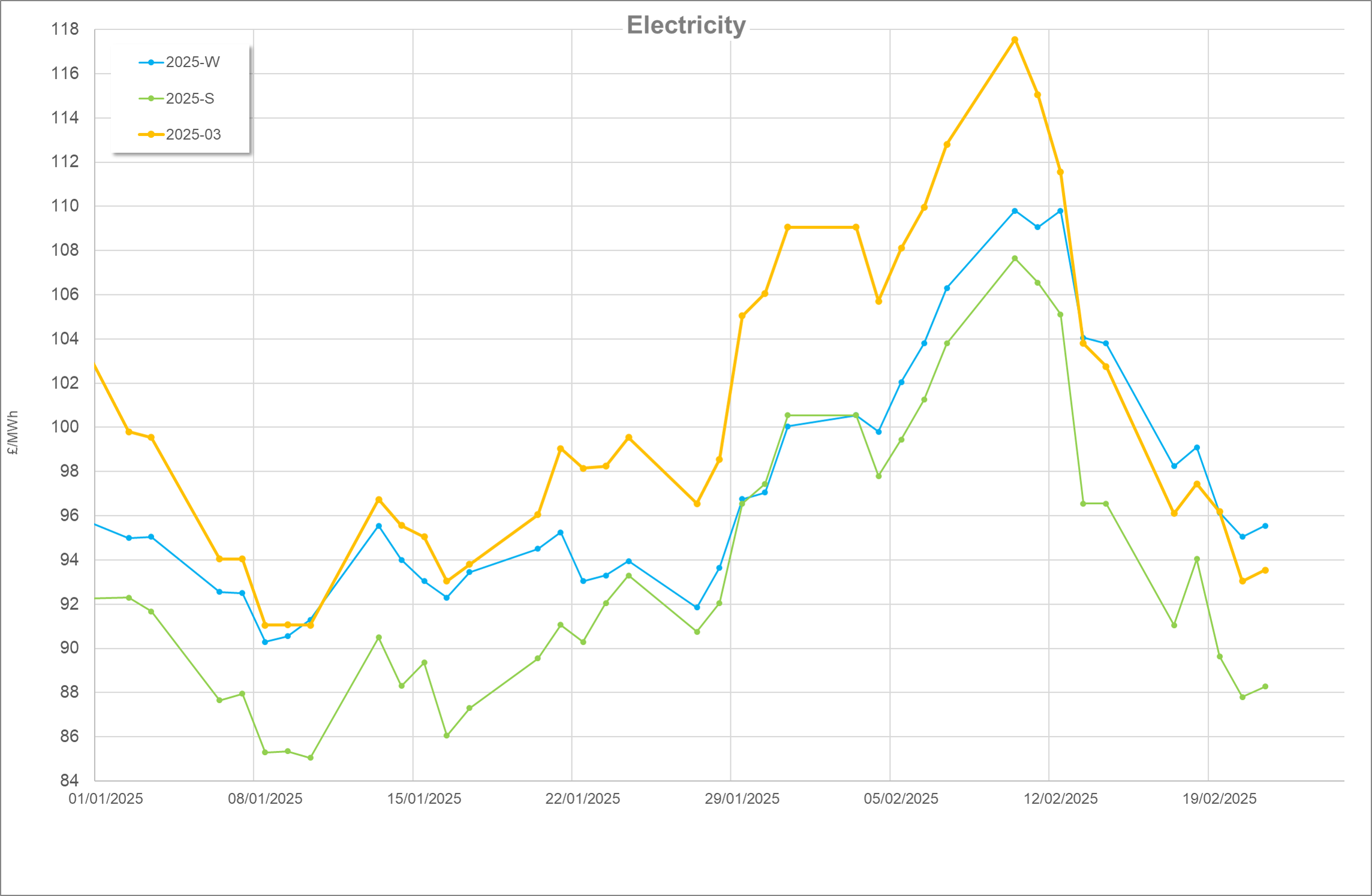Find out the factors that influence light at crop level and the strategies that can be used to improve light transmission.
Quick links:
- Ways to maximise the amount of light reaching the crop
- What does research tell us?
- The importance of keeping things clean
- Glass and glass coatings
- How to optimise the use of screens
- Glasshouse construction
- How to put it all into practice
Ways to maximise the amount of light reaching the crop
If someone offered you a product that could increase light transmission in your glasshouse by 10%, would you be interested? How much would you be prepared to pay? There’s a reasonable chance that a result like this is achievable, and the cost is probably less than you think. Many technologies and solutions exist which promote improved light transmission. These include structural considerations, such as roof orientation and angle, as well as the type of glass and frame used, but
there are also some simple solutions to help maximise the amount of light reaching the crop. Total light transmission is calculated as the sum of direct and diffuse light. Typically, a glasshouse will transmit different amounts of each. Growing in glasshouses has many advantages and allows careful control of the climate within. With modern glasshouses making extensive use of technology, such as renewable heating systems, LED lighting and air movement devices, an optimum climate can almost always be achieved regardless of external conditions. However, this level of control comes at a financial cost. You know the importance of keeping the plant in balance for optimal photosynthesis, with water, light and CO2 the essential components for promoting plant growth. While each of these can be supplemented artificially, there is no better, or cheaper, source of light than the sun.
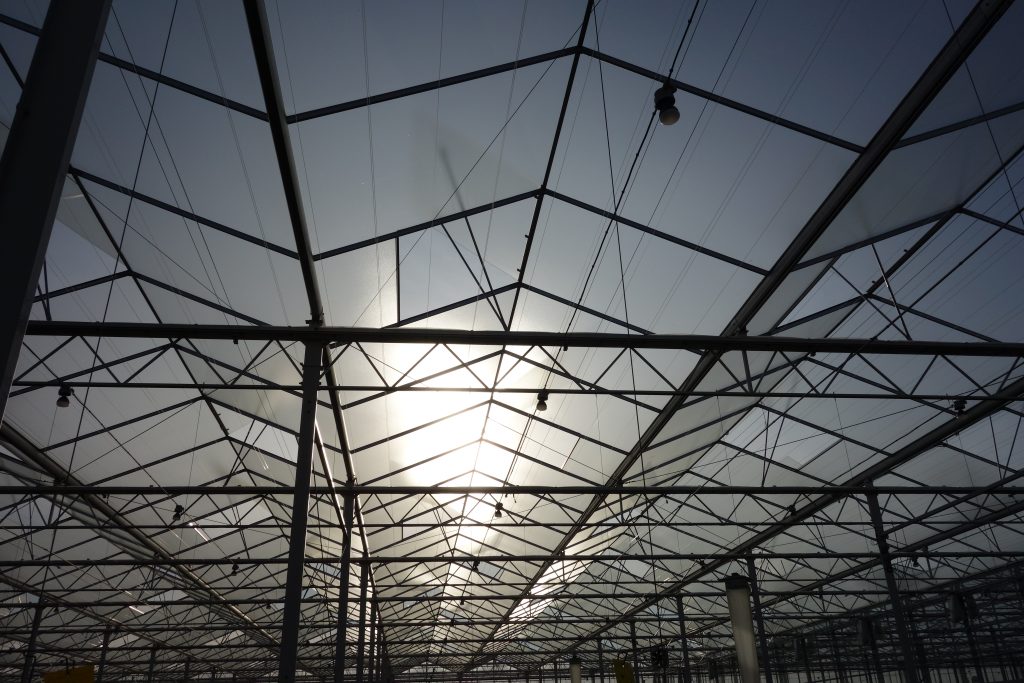
What does research tell us?
A look at recent research and the relationship between light and production.
Research has shown a strong correlation between crop yield and the amount of Photosynthetic Active Radiation (PAR: 400-700nm wavelengths) light reaching the crop. Industry research suggests a 1% increase in light can lead to a 1% increase in production, particularly during autumn, winter and spring. In summer, daylight levels are likely to be above the light saturation point shown in Figure 1. Beyond this point, the amount of PAR light reaching the crop is no longer the limiting factor, hence further increasing the amount of light will not
increase photosynthesis. That said, too much light is rarely a problem for protected growing; even in the best cases, 40% of sunlight never reaches the crop inside, so it is understandable to want to capitalise on the amount of light available.
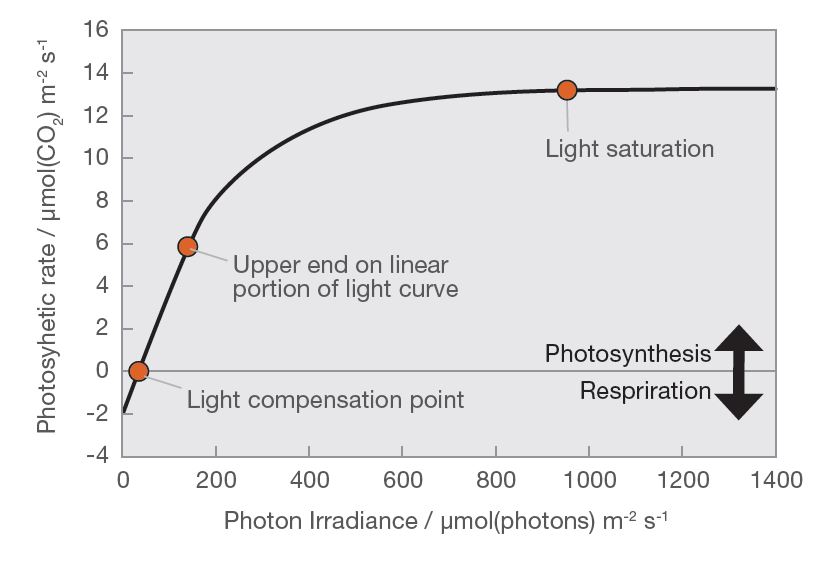
The importance of keeping things clean
The greatest potential improvement in light transmission comes from clean glass.
While the careful choice of technology can go a long way towards improving light transmission, there is potentially no greater gain to be had than by ensuring the glass is kept clean. The benefit can be up to a 10% increase in light transmission, which is significantly more than many of the more hi-tech offerings. Rain may be a free and relatively effective solution for keeping the outside of the glass clean, but the structure will almost certainly benefit from professional cleaning or by using an automated glass cleaner. This should be done before the start of the season when the glasshouse is empty. It is important not to neglect the inside of the glass, as dirt and grime will build up over time, reducing light transmission. Sites with a boiler flue situated close to the glasshouse potentially have more to gain, as fallout from the flue can settle on the glass.
Glass and glass coatings
What types of glass and glass coatings are available and how do they affect condensation and light transmission?
The type of glass used will have an impact on how well light is transmitted through to the crop. Compared to conventional panes, white glass with low-iron content can increase transmission by 1-2%. One Dutch manufacturer, Glascom Tuinbouw, has developed SmartGlass, a low-iron glass which claims light transmission in excess of 90%. When the SmartGlass becomes wet or condensation forms, it creates an ‘adaptive haze’, meaning it turns clear, allowing higher transmission of direct light.
Diffused glass has often been associated with the reduced transmission of PAR light, but improvements in production mean the transmission is now almost equal to that of clear glass. The scattering effect of diffuse glass can result in better uniformity of light in the glasshouse and through the crop. There may be times, however, when direct light is preferred to diffuse, such as during the darker months of the year when the angle of the sun in the sky is shallower.
An effective retrofit option might give similar results by using one of the myriad of glass coatings that can be applied. Under normal conditions, condensation on the glass will cause large droplets of water to form, which then drip on the crop below. Hydrophobic (i.e. water repellent) coatings can make the problem worse, as the surface tries to repel the water droplets. Research in this area by Wageningen University & Research concluded average losses of light up to 9% due to condensation. In contrast, a hydrophilic coating (such as ReduSystems’ AntiCondens Glas coating) causes dispersion of moisture across the surface, creating a thin film of condensation. Aside from the fact that this is less likely to drip, more light is transmitted than when large droplets form. Furthermore, the consistent film of water has the effect of diffusing the light, which for some crops may be beneficial, but for others may have little impact. Coatings are also available for screens, giving similar results. However, it is worth noting that any moisture on the glass or screen will reduce light transmission to some degree, compared to a dry surface.
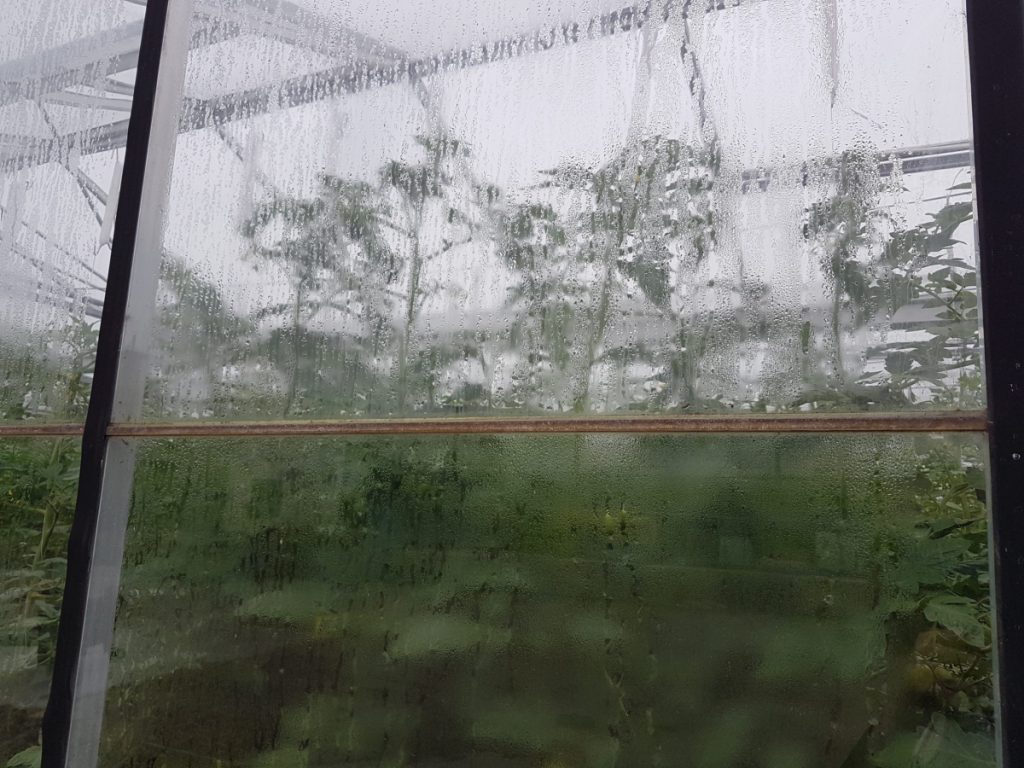
How to optimise the use of screens
Points to consider in relation to the different types of screen available in order to maximise light levels.
The use of screens is commonplace these days, with a variety of types and functions. All screens will reduce the light intensity reaching the crop, but some will block more light than others. Light transmission through screens ranges from around 90% for the most transparent to <0.5% for a blackout screen, the use of which is intended to prevent light emission to the outside world. If using retractable screens, make sure they are tightly packed when folded. Be aware, also, that after several years of use, material degradation can significantly reduce the amount of light penetrating the screen and reaching the crop beneath. According to screen suppliers, contamination and wear can lead to an annual loss of 2-3% in light transmission and thermal insulation. Keeping screens clean, including insect screens on the vents, is an easy way to maintain optimum light levels.
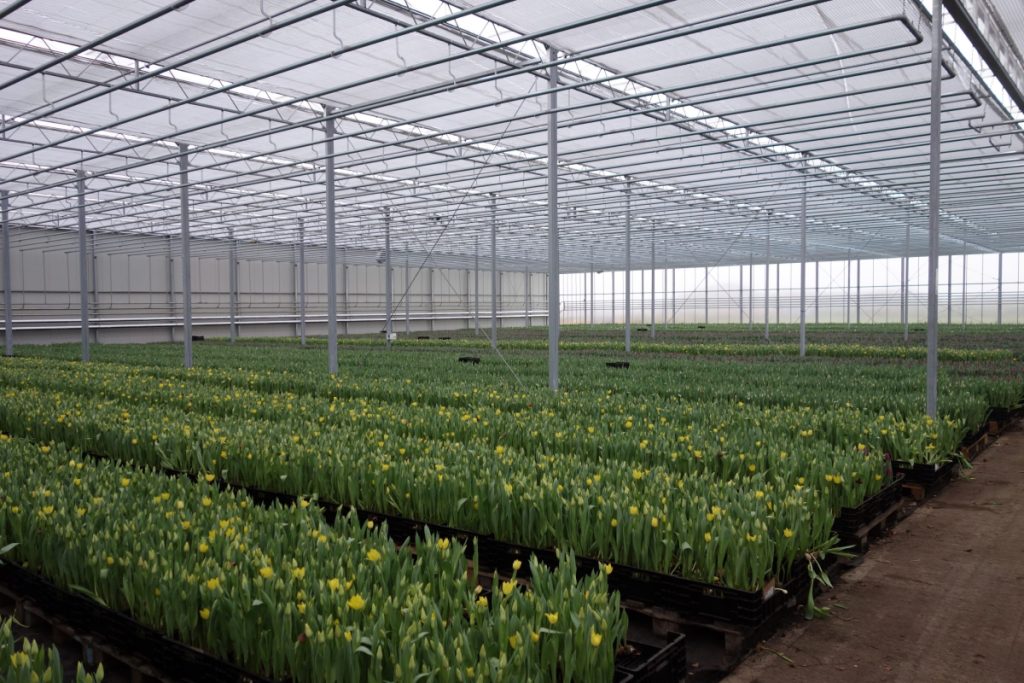
Glasshouse construction
How to gain the maximum benefit of the sun and maximise the amount of light at crop level.
When designing and building a glasshouse from scratch, a significant opportunity exists to ensure optimal orientation and angle of tilt of the roof to gain maximum benefit of the sun. Consideration should be given to the position of the sun in the sky throughout the year; the sun is much lower in the winter than the summer, so this may be a factor for those targeting year-round production. Figure 3 shows the effect of the angle of incidence of the sun on light transmission. For maximum light penetration throughout the year, a north-south roof ridge is best. However, an east-west orientation will let in up to 30% more direct light during the winter months.
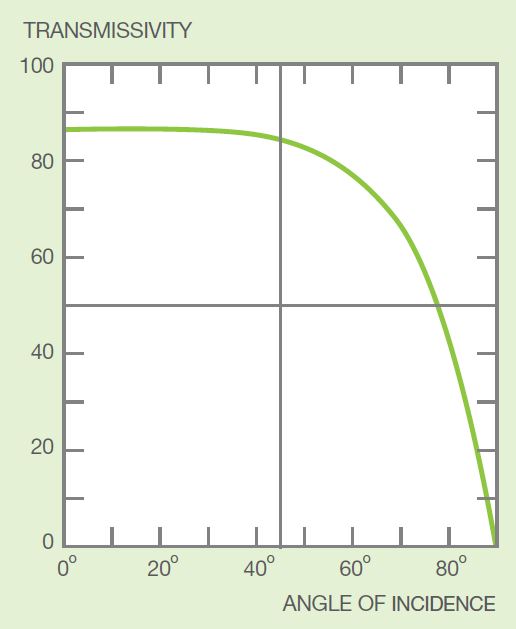
Although much of the building is glass, other structural components will block light. Minimising these parts of the structure allows for a greater area of glass, with a completely frameless design being optimum for maximum light levels. Among more traditional designs, a Venlo construction could increase light transmission by up to 5% over a saw-tooth profile.
Fixtures and fittings inside the glasshouse will also affect the amount of light at the crop level. Careful consideration of the placement of measuring boxes, pipes and light fittings, for example, can help to limit losses by making sure they are not shading the crop below.
Some parts of the construction, such as the frame and benches, can be painted white to reflect light towards the plants.
How to put it all into practice
Points to consider when putting the theory into practice, including the potential increase in light transmission typically associated with each strategy.
These ideas are not revolutionary and many can be implemented with minimal investment. Taking care of the basics can help to ensure high light transmission and optimum condensation behaviour, potentially without having to invest in expensive technologies and retrofit solutions. Figure 4 summarises the potential benefits achievable from the various solutions.
The biggest gain to be had is likely to come from ensuring the glass itself is kept clean; beyond that, it is about maximising the available light. The percentages quoted in this document are based on industry research, but individual results may vary. In each case, the percentage increase is relative to the baseline light transmission of the glasshouse; i.e. if 50% light transmission is currently achieved, a 10% increase will take this to 55%. To verify that there is actually an improvement, it is advisable to measure the amount of PAR light at crop level before and after making any changes.
It is also worth bearing in mind that if good levels of light transmission are already achieved, further improvement will be harder to come by. At some point, the investment required is likely to outweigh the benefit, so it is always worth trying to choose the most cost-effective strategies.
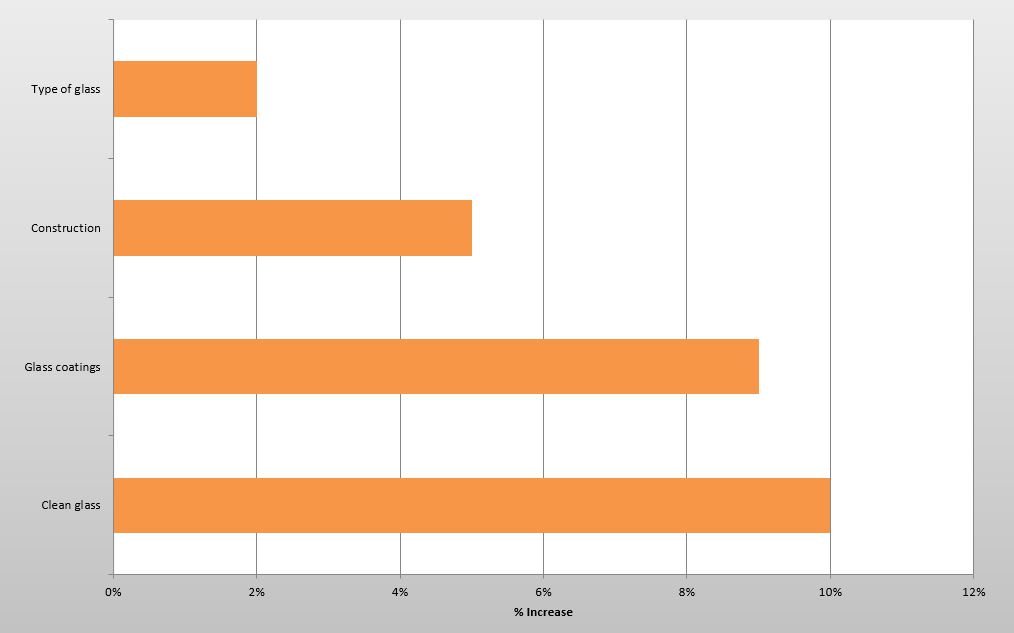
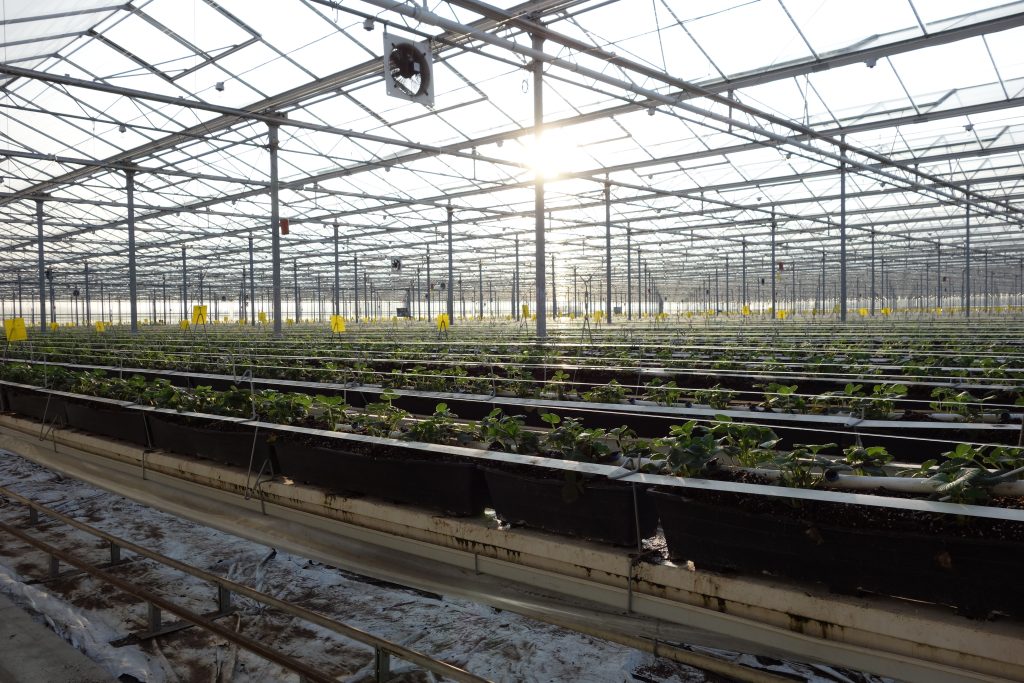
Articles and research references
Does light transmission through greenhouse glazing matter? Article by John W. Bartok Jr., Greenhouse Management
Details about Glascom Tuinbouw, the developers of the low-iron glass SmartGlass.
Research report from Wageningen University & Research (in Dutch) Condensation against the greenhouse cover; Light and energy effects of condensation on eight greenhouse cover materials.
Information related to light transmission through screens from CMW Horticulture.
Light transmission and photosynthesis in greenhouses (1978); Kozai, Goudriaan & Kimura.

